They say you should never go back. But I went anyway. A year ago, I wrote a 35mmc piece about trying to capture an impression of spring in the beech woods near my home, using a Pentax K1000 and a Takumar-A zoom. I concluded that neither item had a long-term place in my kit, and both were duly offloaded. I also decided I had better Pentax tools for the job, so in spring 2021, I went back to the same woods to try again.
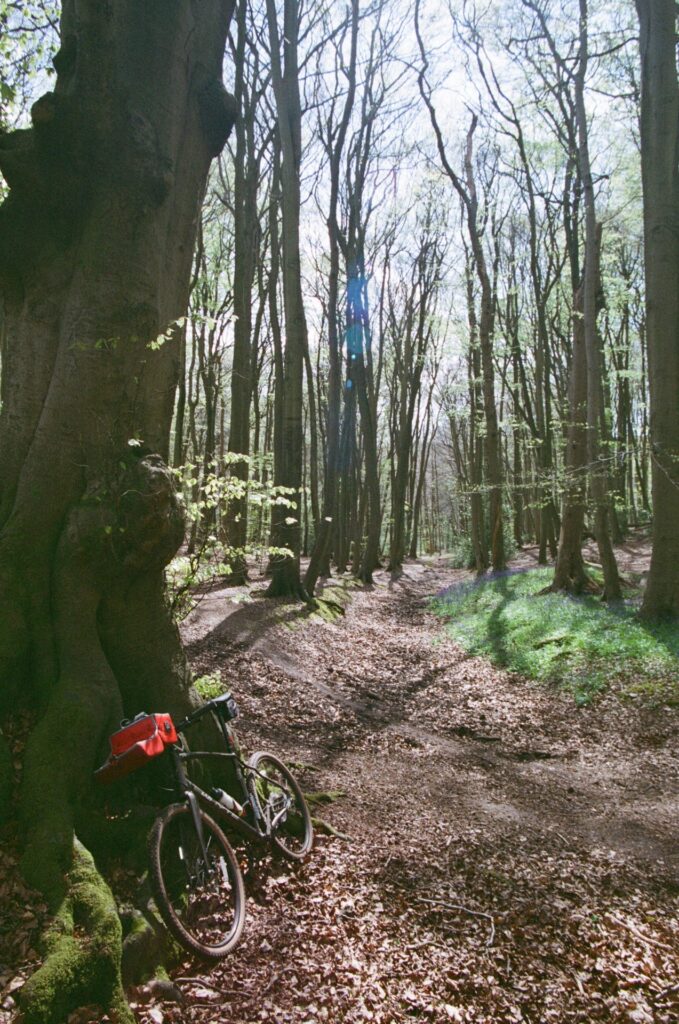
‘Familiarity breeds contempt’, my dad used to say; you fail to appreciate what you see all the time. Happily, not so in this case. I still love the smells and sounds of the woods – and, best of all, the magical pale-green light as the sun filters through millions of translucent new leaves. By July, the leaf canopy is so dense, so effective at grabbing the sun’s energy, that I have to take off my cycling sunglasses just to see well enough where I’m going, but in early May it all feels bright, fresh and full of promise. And this particular patch is far enough from anywhere you can park a car to get very few human visitors, so it’s peaceful too.
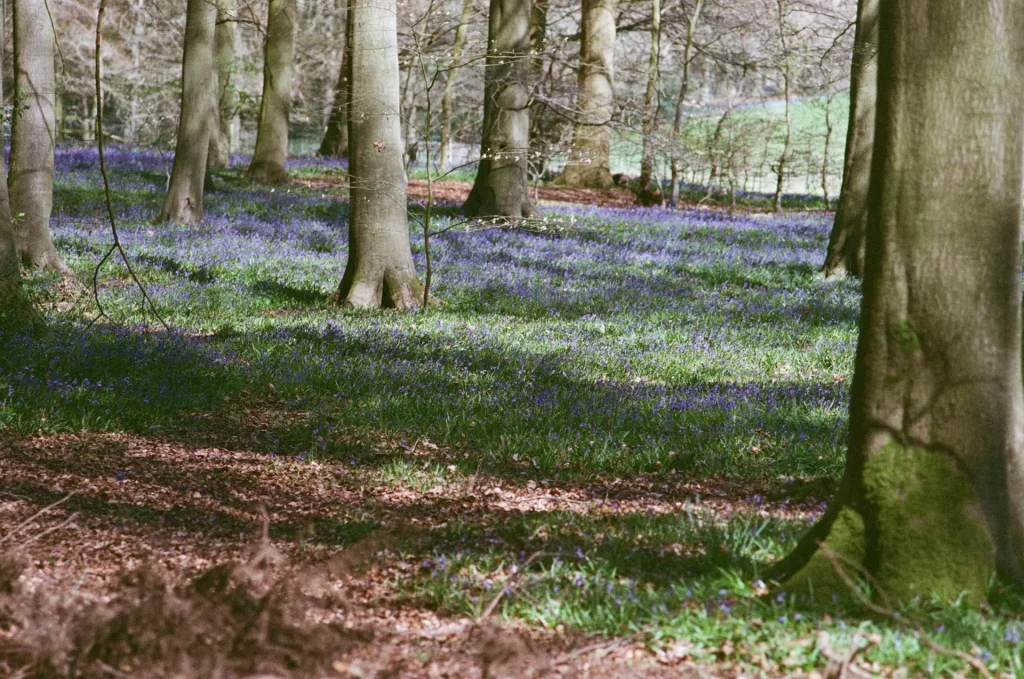
But this is supposed to be about photography, and the equipment I took to the woods with me. The successes of the first shoot were Fuji 200 negative film and manual metering. I’m mostly an aperture-priority guy but the woodland environment contains deep shadows and bright sky, which might fool an automated camera into making big shifts in exposure for small changes in framing. Better to stay manual, so what better than a Pentax MX?
Lens-wise, I had the SMC-A 24-50mm f/4 zoom that passed its probation last year, the bijou SMC-M 120mm f/2.8 in place of the bulky telezoom, and, in the middle, my long-serving SMC-A 50mm f/2.8 Macro. True to form, I didn’t make precise notes on which frame was shot with which lens, but the Pentax SMC coatings give a pleasing consistency across the set.
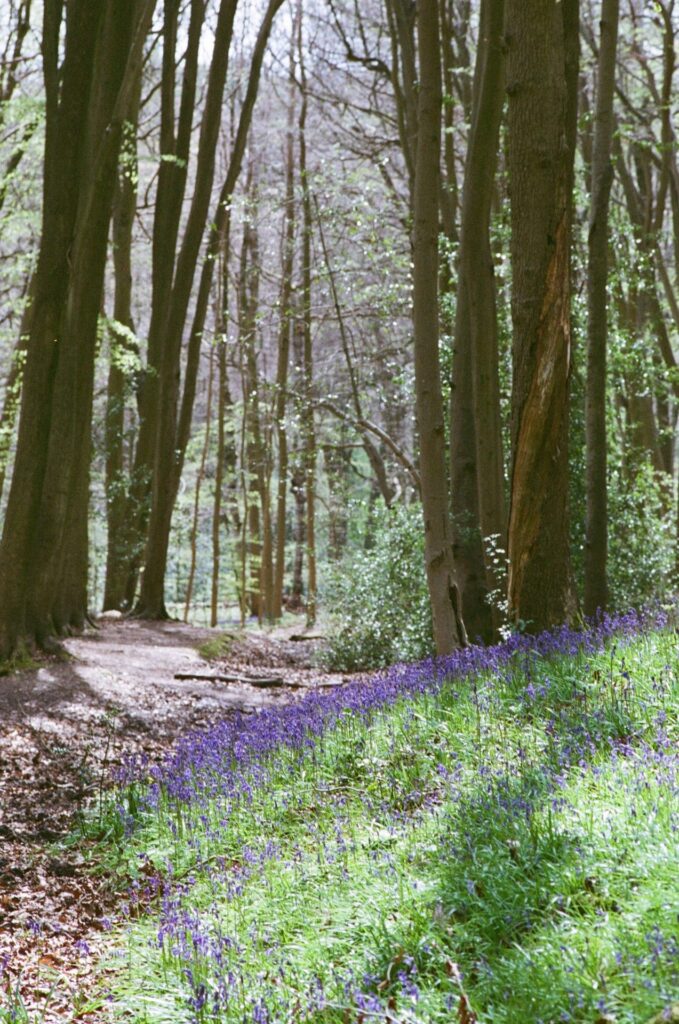
The results are in
Enough preamble, how were the pictures? Well, as with the K1000 last year, the MX’s meter didn’t miss a thing. There isn’t a single mis-exposed shot on the roll. I don’t remember feeling I was working hard either, from which I deduce that the beautifully clear three-colour LED display was doing its job of gently telling me when I was bang-on, or simply close enough. This sort of ease-of-use is arguably worth at least as much as any amount of fancy-pants matrix or evaluative metering, because it lets me work quickly and trust my instinct, but lets me know if I’m about to do something silly. Much as I respect the Nikon FM series, I think the MX does this better. It takes less room in the handlebar bag too.
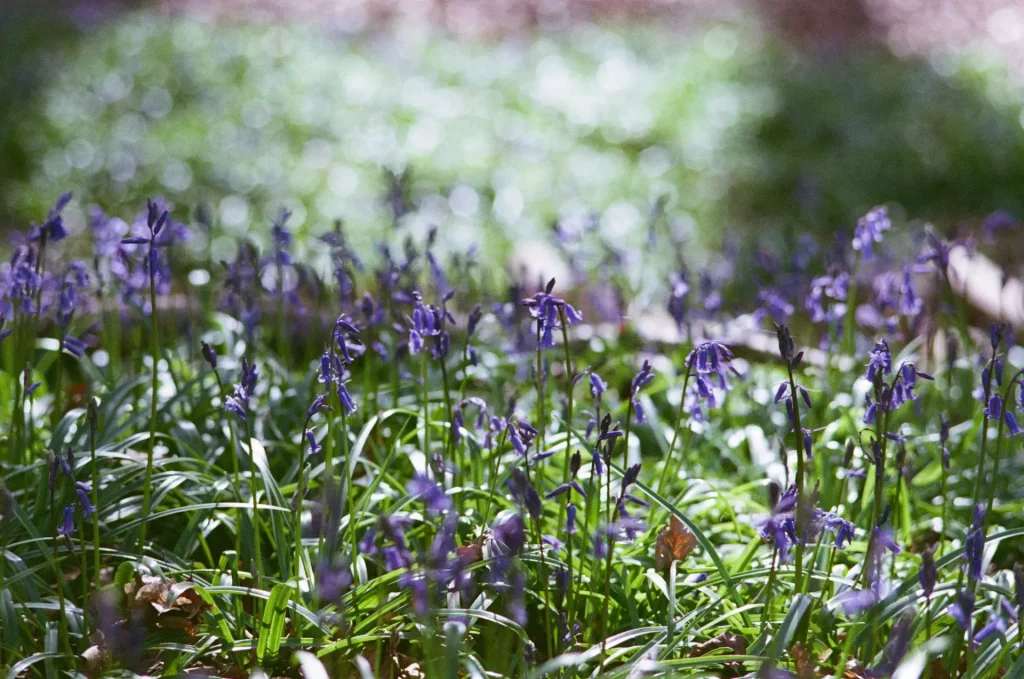
And the lenses made a happier set than last year’s – even if you can see a trace of flare from the 24-50, set wide and aimed towards the sun. My older SMC 24mm f/2.8 prime probably wouldn’t have done that – but it would be a brave choice for a single lens to carry all day, which is what I sometimes want the 24-50 to be. The 50 Macro can be a tricky thing to focus close on flowers when there’s even a hint of breeze, so I went for close-up impressions rather than perfect isolation.
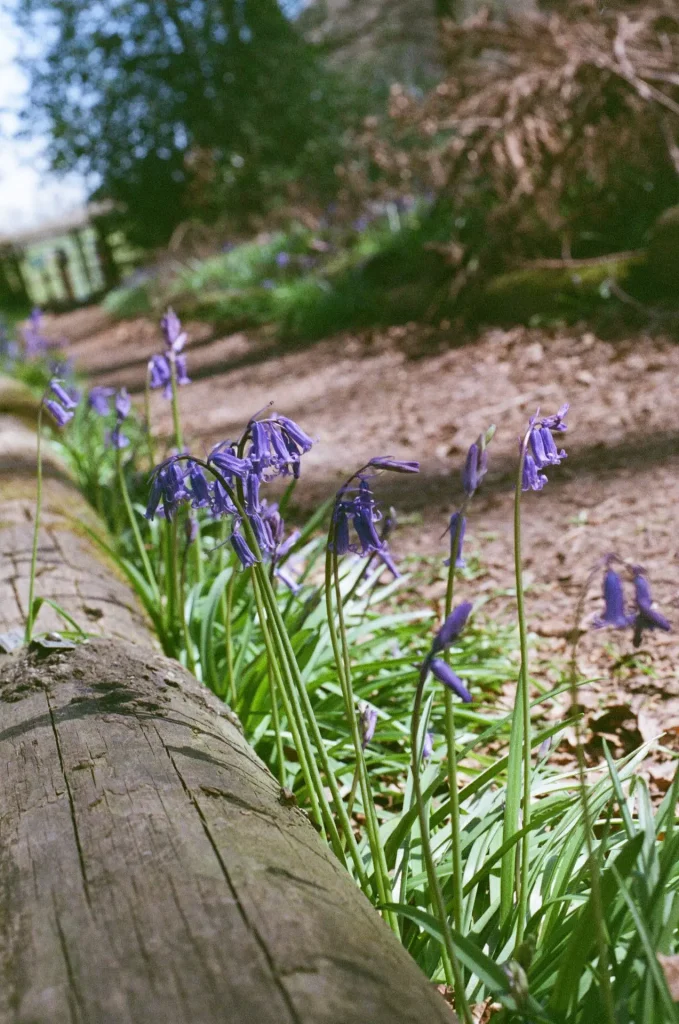
And the 120/2.8 is simply very good, and orders of magnitude better than the cheapie zoom. It did a nice job of compressing the view of the bluebells to maximise the impression of colour, and it’s probably the lens of the three that I most enjoyed using that day.
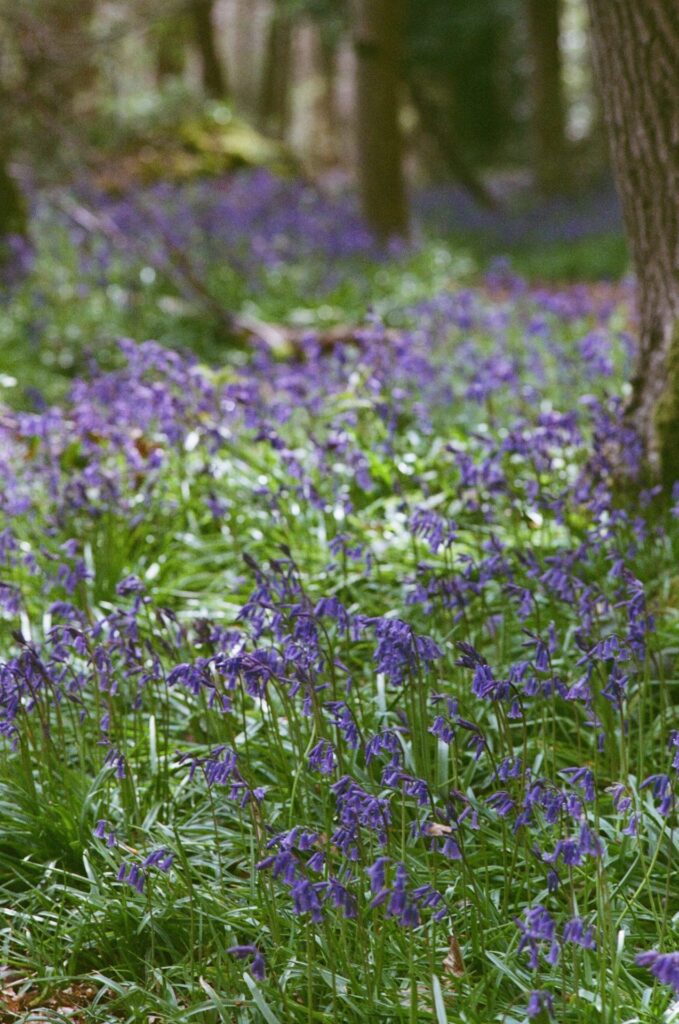
And finally, just to show there’s more to spring than bluebells…
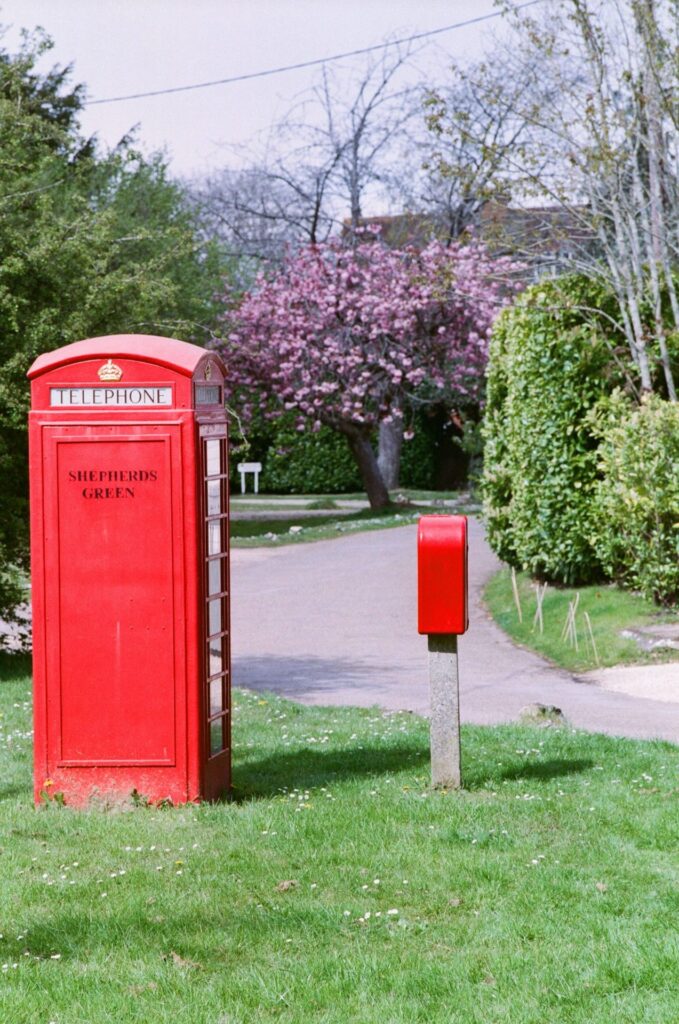
Why it matters – to me
As I mentioned last year, getting out of the house and into these beautiful, tranquil places has been a real benefit. I’ve had nothing like as much to cope with as many during the pandemic, but I do find it difficult to spend every working day in the same chair, looking at the same screen. I know I sleep better after a day when I’ve had a change of light and scenery, so this little piece is my acknowledgement of what the woods have done for me.
Now, it must be about time to do an autumn set. At my usual workrate, it should be ready some time in March.
Share this post:
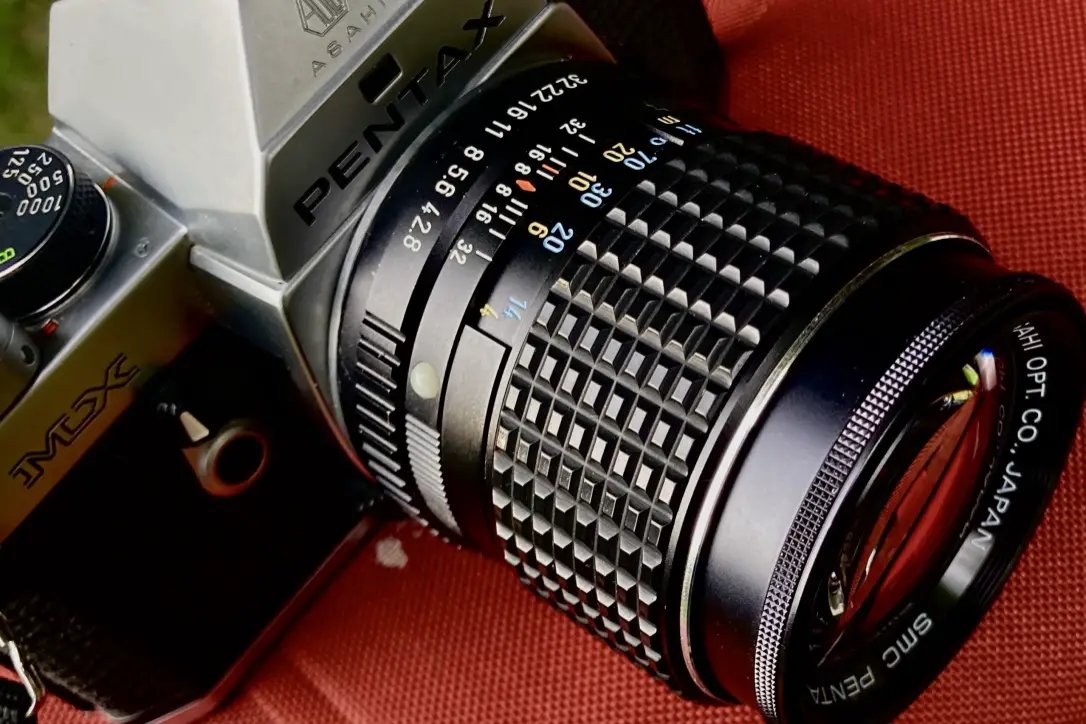








Comments
Matthew Brown on Back in the woods with a Pentax MX and 3 SMC lenses – By Clive Williams
Comment posted: 13/11/2021
Safiyyah on Back in the woods with a Pentax MX and 3 SMC lenses – By Clive Williams
Comment posted: 13/11/2021
Comment posted: 13/11/2021
Comment posted: 13/11/2021
Kodachromeguy on Back in the woods with a Pentax MX and 3 SMC lenses – By Clive Williams
Comment posted: 13/11/2021
Fred Nelson on Back in the woods with a Pentax MX and 3 SMC lenses – By Clive Williams
Comment posted: 13/11/2021
Nick on Back in the woods with a Pentax MX and 3 SMC lenses – By Clive Williams
Comment posted: 14/11/2021
Comment posted: 14/11/2021
Alan on Back in the woods with a Pentax MX and 3 SMC lenses – By Clive Williams
Comment posted: 14/11/2021
Comment posted: 14/11/2021
Richard Moore on Back in the woods with a Pentax MX and 3 SMC lenses – By Clive Williams
Comment posted: 21/11/2021
That said I was wondering what you think about that 24-50mm zoom ? Sounds like a handy range when I just can't be faffed with my usual primes. Would agree though that if you haven't tried it the SMC-A 35-105 is a really good albeit heavy lens.
Comment posted: 21/11/2021
Comment posted: 21/11/2021
JohnT on Back in the woods with a Pentax MX and 3 SMC lenses – By Clive Williams
Comment posted: 15/07/2025
Never owned a K1000 nor wanted to, although I do have a KM, which is basically a K1000 with DOF preview and timer.
My SMC 50/1.7 and 2.8/135 on the MX make for a great day out!